I have had a lot of fun poking fun at Traeger over the last few years but it is time for me to step up and give them credit. Traeger has started producing some seriously improved pellet grills. It looks like Traeger is leaving the lower end products to brands like Pit Boss and Z Grill while they focus on higher performance products.
Traeger offers several different types of grills but the primary focus is on three different product lines:
- Traeger Pro Series
- Traeger Ironwood
- Traeger Timberline
At first glance these grills look similar as they are all powered by Tragers new D2 Direct Drive and WiFire control systems, have similar body styles and operate from the same basic principles. These grills all come with a single meat probe and a magnetic door at the base of the pellet hopper for easy clean out. The Pro, Ironwood and Timberline grills are all covered by three year warranties.
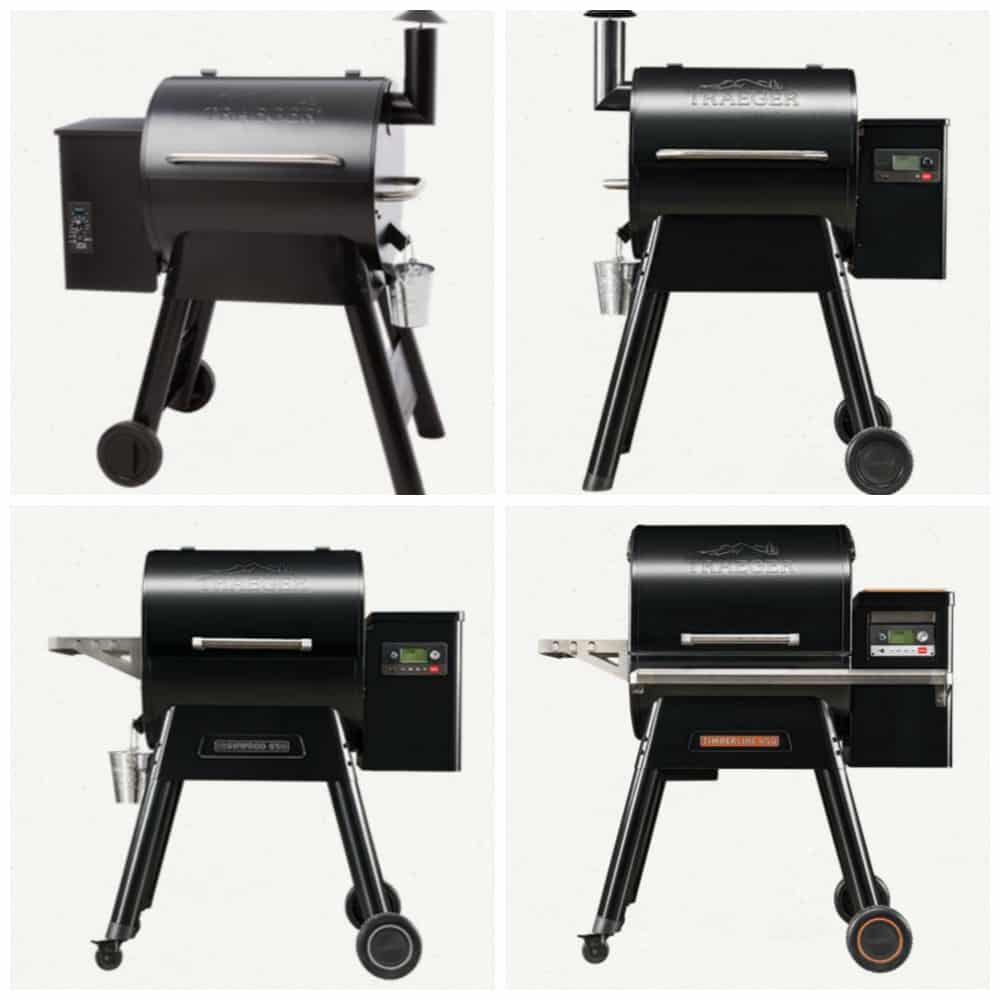
However, once you take a closer look you can spot some significant differences. Based upon these differences, if I was in the market to buy a Traeger, then I suspect that I would buy an Ironwood. Lets break these three product lines down so you can see which one is right for you.
Traeger Pro Series 575 and Pro Series 780
The Pro Series is the base model grill and comes in two sizes, the 575 model and the 780 model. Other than size there are no meaningful differences between the 575 and 780.
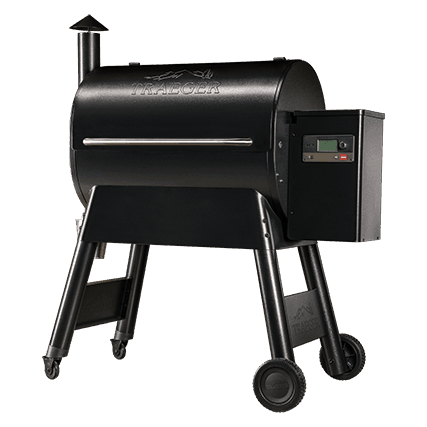
Traeger Pro Series 575 and 780 Specifications
- Primary Cooking Grate: 22 x 19 inches (575 model), 30 x 19 inches (780 model)
- Secondary Cooking Grate: 22 x 7 inches (575 model), 30 x 7 inches (780 model)
- Grill Capacity: Five Racks of Ribs (575 model), Six Racks of Ribs (780 model)
- Hopper Capacity: 18 pounds of pellets
- Maximum Temperature: 450F
- Vent: Smokestack Chimney
- Grease Management: External drain to bucket
- MSRP: $699 (575 model), $899 (780 model)
The Pro Series are nice grills and if I wanted to spend less than $1,000 bucks then these would be fine choices.
Please note: There are two versions of Tragers being sold as Pro Series and they are NOT the same. The older Pro Series are now being called Generation 1 Pro Series and have the outdated control panel and drive train. If you see the following control panel on a Traeger then it is the older models.
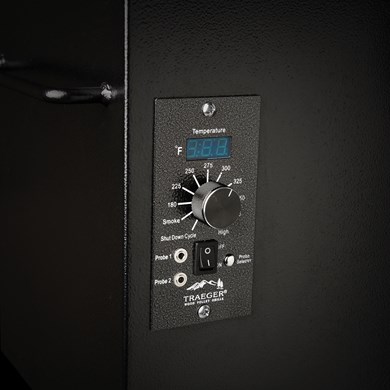
Traeger Ironwood Series 650 and Ironwood Series 885
The Ironwood grills are upgrades from the Pro series and come in two sizes, the 650 model and the 885 model. Other than size there are no meaningful differences between the 650 and 885.
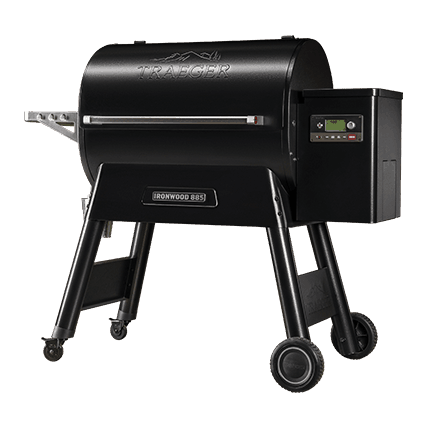
Traeger Ironwood Series 650 and 885 Specifications
- Primary Cooking Grate: 22 x 19 inches (650 model), 30 x 19 inches (885 model)
- Secondary Cooking Grate: 22 x 10.5 inches (650 model), 30 x 10.5 inches (885 model)
- Grill Capacity: Five Racks of Ribs (650 model), Seven Racks of Ribs (885 model)
- Hopper Capacity: 20 pounds of pellets
- Maximum Temperature: 500F
- Vent: Rear Exhaust
- Grease Management: External drain to bucket
- MSRP: $1,199 (650 model), $1,399 (885 model)
So those are the base numbers for the Ironwood grills but what do they really mean?
Pro Series vs Ironwood
The most obvious difference between these grills, cooking area, is the least important. For example, the Pro Series 575 has roughly 575 square inches of cooking area between the top and upper grate compared with 650 square inches on the Ironwood 650. However, the 13% more grilling space on the Ironwood is the result of the top grate being 10.5 inches wide instead of 7 inches on the Pro. This size difference is irrelevant and is reflected in the fact that both grills can only handle five racks of ribs.
So if size isnt the big difference then what is?
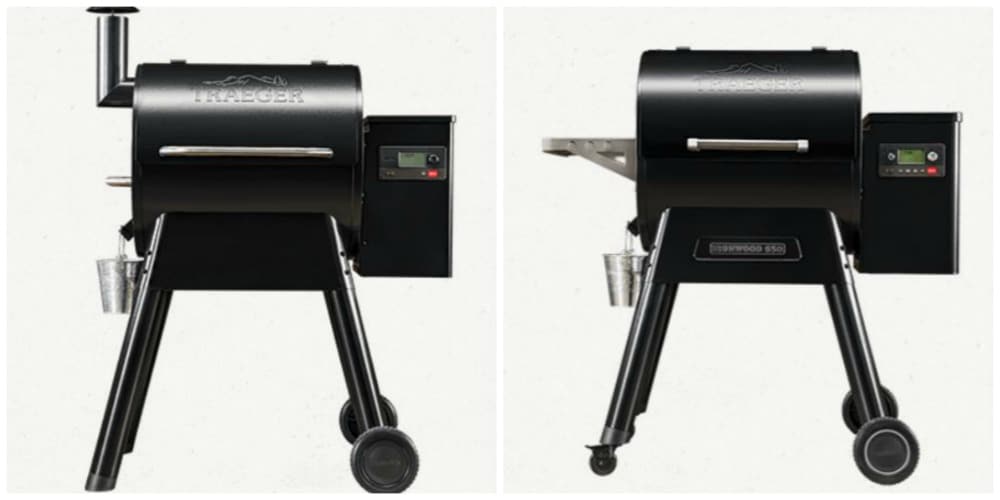
The Ironwood has:
- Double side wall insulation for better heat retention.
- A gasket lined lid for better heat retention.
- A higher top temperature.
- A larger hopper.
- Rear mounted downdraft convection inducing smoke vents.
It is the last bullet, the rear mounted smoke vents, that is the biggest difference to me.
For years one of the biggest complaints about pellet smokers was that they did not produce enough smoke flavor. I know of one competition barbecue team that resorted to using Liquid Smoke in their brisket injection when they were cooking on a pellet grill to boost the smoke flavor profile (and they have scored a perfect 180 using that trick!).
One reason that pellet grills didnt provide full smoke flavor was because the wood pellets burned so cleanly that they didnt produce much smoke. The other reason was that what little smoke they did produce quickly rose with the heat and vented out the top mounted smoke stack.
The fix for this problem was to eliminate the smoke stack! The Ironwood does not have a smoke stack. Instead, there are a series of vents in the back of the grill located close to the grate. With this design the smoke that is produced still rises with the heat but must be pulled down and across the meat before it can vent to the atmosphere.
With the rear based vent configuration on the Ironwood you get better convection cooking (10% faster cooking times), better smoke flavor and better smoke rings than you get with the smoke stack vent configuration on the Pro Series.
Traeger Timberline Series 850 and Timberline Series 1300
The Ironwood grills are upgrades from the Timberline series and come in two sizes, the 850 model and the 1300 model. Other than size there are no meaningful differences between the 850 and 1300.
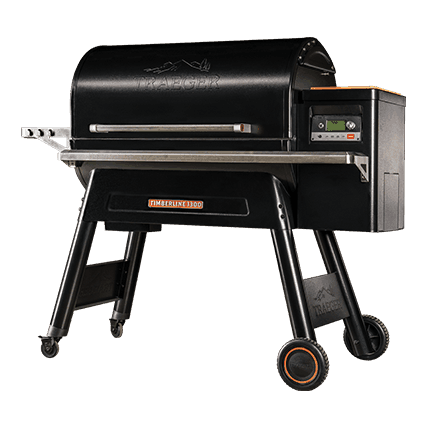
Traeger Timberline Series 850 and 1300 Specifications
- Primary Cooking Grate: 22 x 16 inches (850 model), 34 x 16 inches (1300 model)
- Secondary Cooking Grate: 22 x 14 inches (850 model), 34 x 14 inches (1300 model)
- Tertiary Cooking Grate: 22 x 9 inches (850 and 1300 models)
- Grill Capacity: Eight Racks of Ribs (850 model), Fifteen Racks of Ribs (1300 model)
- Hopper Capacity: 24 pounds of pellets
- Maximum Temperature: 500F
- Vent: Rear Exhaust
- Grease Management: Concealed internal
- MSRP: $1,799 (850 model), $1,999 (1300 model)
Timberline vs Ironwood
In addition to the specifications given above other differences between the Timberline and the Iron wood are that the Timberline comes fully insulated with a double walled stainless steel interior, has stainless steel grates and comes with a pellet sensor that alarms if your pellets are running low.
The increased capacity of the Timberline comes from adding a third cooking grate which means they have a similar footprint to the Ironwood.
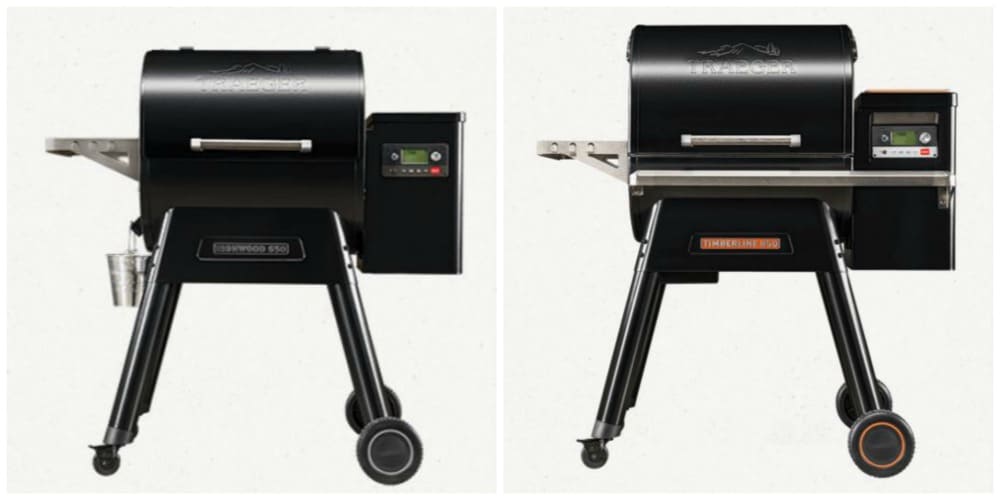
Make no mistake, the Timberline grills are awesome. I put my hands on one a few years back when they were first released and was seriously impressed. That being said, I wouldnt buy one because you can get all of the really important features on the less expensive Ironwoods.
I think that I am not alone in my assessment as I visited four specialty grill stores while researching this review. All of them carried the Ironwood grills and none of them carried the Timberline. They all said they would be glad to order a Timberline for me but they preferred not to keep them in stock.
Related Pellet Grill Posts
- Best Pellet Grill for the Money
- Traeger Renegade Elite Reviews
- Rec Tec vs Traeger: Two Great Pellet Grills With One Clear Winner
- Traeger vs Pit Boss: Are Either of These Pellet Grills Worth Buying?
- Masterbuilt XL Pellet Smoker: Strong First Impressions
- Pit Boss Copperhead Vertical Pellet Smoker
- Pit Boss Austin XL Pellet Grill Review
- Pit Boss Whiskey Still Pellet Smoker Review
- Pit Boss Pro Series Pellet Grill and Vertical Smoker Review
- Camp Chef Pellet Grill Review
- Small Traeger Grills: Junior Elite, Tailgater and Bronson Reviews
- Z Grill Pellet Grill and Smoker
- Hands On Review of the Z Grill 7002
- Louisiana Grills Champion Backyard Pro
- Kingsford Pellet Review: Three Ways to Enjoy the Smoke
- Outdoor Gourmet Triton XL Pellet Grill Review
- Rec Tec Grills: Bull, Stampede, Trailblazer, Bullseye and Matador
- Grilla Grills Silverbac Review
- Traeger Pro Series 575 and 780 Pellet Grills With D2 Wi-Fire Controllers
- Best Wood Pellets for Smoking Meat
- Best Portable Pellet Grill Options
The post Traeger Pellet Grills: Pro vs Ironwood vs Timberline (2020 Updates) appeared first on Meat Smoking for Beginners.
